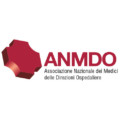
ANMDO
The Italian Association of Doctors of the Hospital Directions in collaboration with SItI - Italian Society of Hygiene, Preventive Medicine and Public Health
released: 1 November 2015
last updated: 1 June 2022
How this list was created
ANMDO joined the project named “Doing more does not mean doing better”. It is also committed to providing its own original contribution to it, by drawing up lists concerning organization and hygiene areas of competence, including performances of dubious value, and instead promoting effective interventions based on available evidence, consistent with the context in which they must be carried out. Being aware of its specific nature, it was decided to focus on Hospital Hygiene: an issue with a significant impact on health, although mostly in an indirect way. In an intercompany spirit and with a view to involving the largest possible number of stakeholders, this activity was carried out together with the Italian Society of Hygiene, Preventive Medicine and Public Health (SItI) through the creation of an ANMDO-SItI working group. The choice of practices took into account the relevance of infection risks in health facilities. The working group intends to carry out a twofold task: to identify the most relevant practices supported by scientific evidence and, at the same time, to make them operational within healthcare facilities across the country through the Public health perspective, professionalism and determination. All recommendations were revised in June 2022.
About this society:
The Italian Association of Doctors of the Hospital Directions – A.N.M.D.O. promotes the continuous improvement of health and welfare services in terms of planning, business management and organization, hygiene- health organization, technical assistance and health management. For more details please contact: anmdo.segreteria@gmail.com
The Italian Society of Hygiene, Preventive Medicine and Public Health – S.It.I. promotes scientific and cultural progress in the field of Hygiene, Epidemiology, Public Health, Preventive and Community Medicine, Planning, Organization, Management and Health Economics, as well as in all their possible functional combinations.







Recent Comments